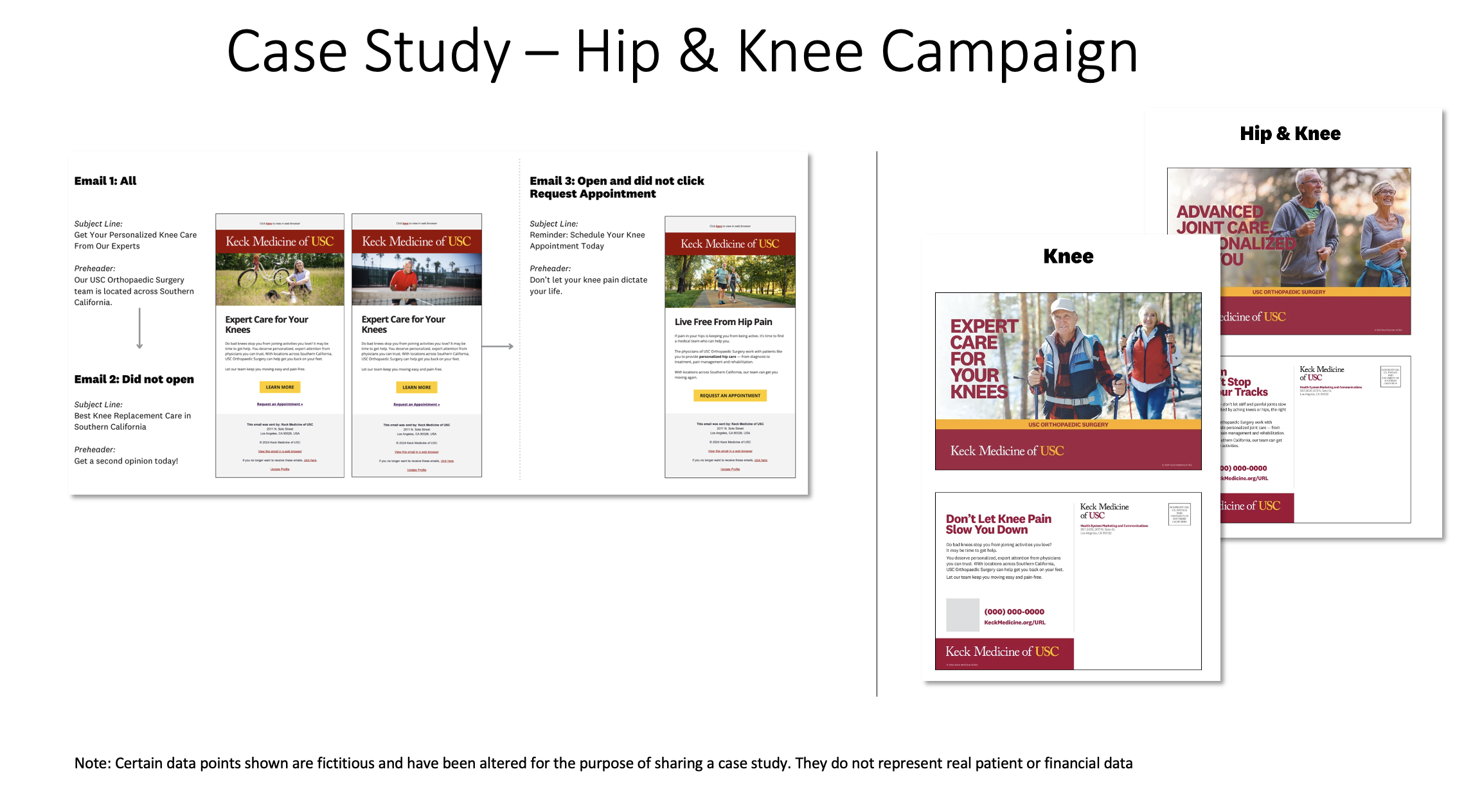MARKETING
Revolutionizing Patient Engagement Through Clinical Propensity Models
How can health care professionals, marketers, and strategists influence a patient’s care journey and have a meaningful impact on their life?
That was the challenge facing Jonathan Beltran, MBA, the Senior Director of Marketing Operations and Analytics at Keck Medicine of USC, in Los Angeles. During his 2024 SHSMD annual conference presentation—"Leveraging Clinical Propensity Models in Health Care”—connecting with patients requires stepping outside the shoes of a health care professional and into those of community members experiencing a health challenge.
Moving beyond broad demographic targeting to strategies that connect with patients as people navigating deeply personal health challenges has been a key part of meeting this challenge. Beltran spearheaded Keck Medicine’s use of clinical propensity models to drive more personalized patient engagement, blending analytics, marketing strategy, and clinical alignment while keeping the patient at the center of every interaction.
What Are Clinical Propensity Models?
Beltran uses a clinical propensity model as a health compass that guides marketers and strategists to the patients who need care at the right time. These models employ machine learning to combine data sources such as census information, demographics, self-reported health, and insurance claims to predict who is most likely to need or act on health care services.
“Because propensity models are built on a variety of rich data sources, we are now able to map a more robust and holistic patient profile,” he says. “It’s like a health care GPS guiding us to the patients that need care, helping to personalize the messaging.”
Reimagining the Patient Journey
For many people, illness or injury can affect every aspect of life: physical, emotional, and social. When health care professionals and marketers understand this and approach outreach with empathy, they can design patient journeys that feel reassuring, guiding people from struggle to recovery.
According to Beltran, this journey entails:
- identifying individuals most likely to need care;
- communicating through channels patients regularly use and trust, such as social media, ads, email, or direct mail;
- providing education after appointments or before procedures, such as condition-specific information or videos from providers; and
- following up with relevant content related to patients’ conditions and life stages that supports recovery and long-term wellness.
“Understanding a patient’s behaviors, environment, lifestyle, goals, and hopes allows marketers and communicators to personalize outreach and tailor messages to a person’s needs,” Beltran says, reminding marketers that empathy is the crux of all communication efforts. “Doing this lets people know your health care system is ready to take care of them.”
Putting Data Into Action
Beltran’s team at Keck Medicine has put this knowledge and the propensity models to work, launching a pilot program in orthopedics that focused on increasing hip, knee, or total joint replacements among commercially insured patients within the hospital’s primary service area (Figure).
The strategy was multichannel and data-driven with personalization at the core of every touchpoint, including:
- targeting specific patients based on their health needs;
- crafting personalized messages tailored to each individual’s health journey;
- delivering multichannel communication in formats patients preferred;
- automating messaging to enhance reach; and
- creating empathy-driven and personal communication that anticipated patient needs by understanding their behaviors and health challenges.
- This allowed the team to provide resources, reassurance, and long-term support rather than simply information on procedures.
Different approaches were thoroughly tested through control groups. Some patients received only email communications and others only direct mail, while still others received both. The results were clear: Multichannel engagement outperformed single-channel approaches.
In just 90 days, the initial pilot generated:
- 62 new patients for orthopedic surgery;
- 29 additional patients for other services like family medicine;
- a 12-fold revenue increase return on investment and sixfold increase in margin ROI; and
- increased appointment requests from both email and direct mail tactics.
Demonstrating ROI
Beltran stresses that health care strategists who take the time to be intentional with clinical propensity models and patient matching can quantify how marketing efforts lead to real-world consultations and improved access to care. In this pilot, success was measured by empowering patients to take the next step and getting them the care needed while meeting organizational growth goals.
Sharing data and the positive impacts on patient volume with executive leadership reinforced the ROI from this approach.
“ROI is the holy grail of marketing,” Beltran says. “If we are asking for additional investment, we need to prove it is effective dollarwise for the organization.”
The campaign’s success was the result of an organizational effort that involved collaboration with clinical leaders, compliance and information technology teams, finance, and marketing.
“It takes a village,” Beltran notes. “When everyone shares the vision and understands their role in impacting the patient journey, the results speak for themselves.”
Keck Medicine is now scaling the orthopedic pilot program and expanding clinical propensity modeling into several additional service lines, including cancer care. The pilot program demonstrates that propensity models help build more authentic patient connections and engagement. Combining predictive analytics with empathetic communication guides patients through their health journeys in ways that feel supportive and personal.
“Empathy drives engagement,” Beltran says. “The data tells us so. Being empathetic across the entire journey is key to transforming patient care.”
